Carly Eakin – PhD Researcher, University of Maine; Department of Wildlife, Fisheries, and Conservation Biology
“They’re not so bad…if you wear gloves.” – Carly E.
“Yum!” – Laura B.
“Argh! Bugs are attacking me for no reason all the time!” – Zach B.
Oftentimes in the world of vernal pools, we focus on the charismatic, “cute” animals – turtles, frogs, and salamanders – but pay less attention to some of the lesser known, yet incredibly important animals. I am of course talking about the subject of this blog post – aquatic insects! When I started studying wood frog (Lithobates sylvaticus) tadpoles I set out with the goal of trying to understand how various aspects of vernal pools influence tadpole health, growth, and survival in urbanizing landscapes. After several first-hand observations of tadpoles missing chunks of their tails (or sometimes nearly the entire tail!) I realized it was time to learn a bit more about those ravenous predators. These bugs are definitely an important component of the vernal pool food web.
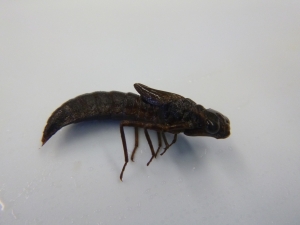 Aeshnid dragonfly larvae have a mouthpart that can extend like an arm and grab a tadpole in a split second. When a tadpole has been successfully captured, this arm-like mouthpart will hold the tadpole to the dragonfly larva’s mouth where it can “chew” on the tadpole.
Aeshnid dragonfly larvae have a mouthpart that can extend like an arm and grab a tadpole in a split second. When a tadpole has been successfully captured, this arm-like mouthpart will hold the tadpole to the dragonfly larva’s mouth where it can “chew” on the tadpole.
Although vernal pools are known to be breeding areas for amphibians such as wood frogs and spotted salamanders, a multitude of insects also rely on these pools for life and help orchestrate the underwater food web. They may look like creepy-crawlies at first glance, but from the perspective of a tadpole these insects might be voracious predators. Other insects, such as caddisfly larvae, are more like ecosystem engineers, shredding the leaves and twigs that fall in the pool. As they breakdown plant matter these insects facilitate the release of detritus-bound energy and nutrients. These nutrients can then be incorporated into the biofilms upon which tadpoles feed with their rasping-tadpole-mouths. From the viewpoint of a tadpole perhaps these insects are the farmers and chefs of the vernal pool world.
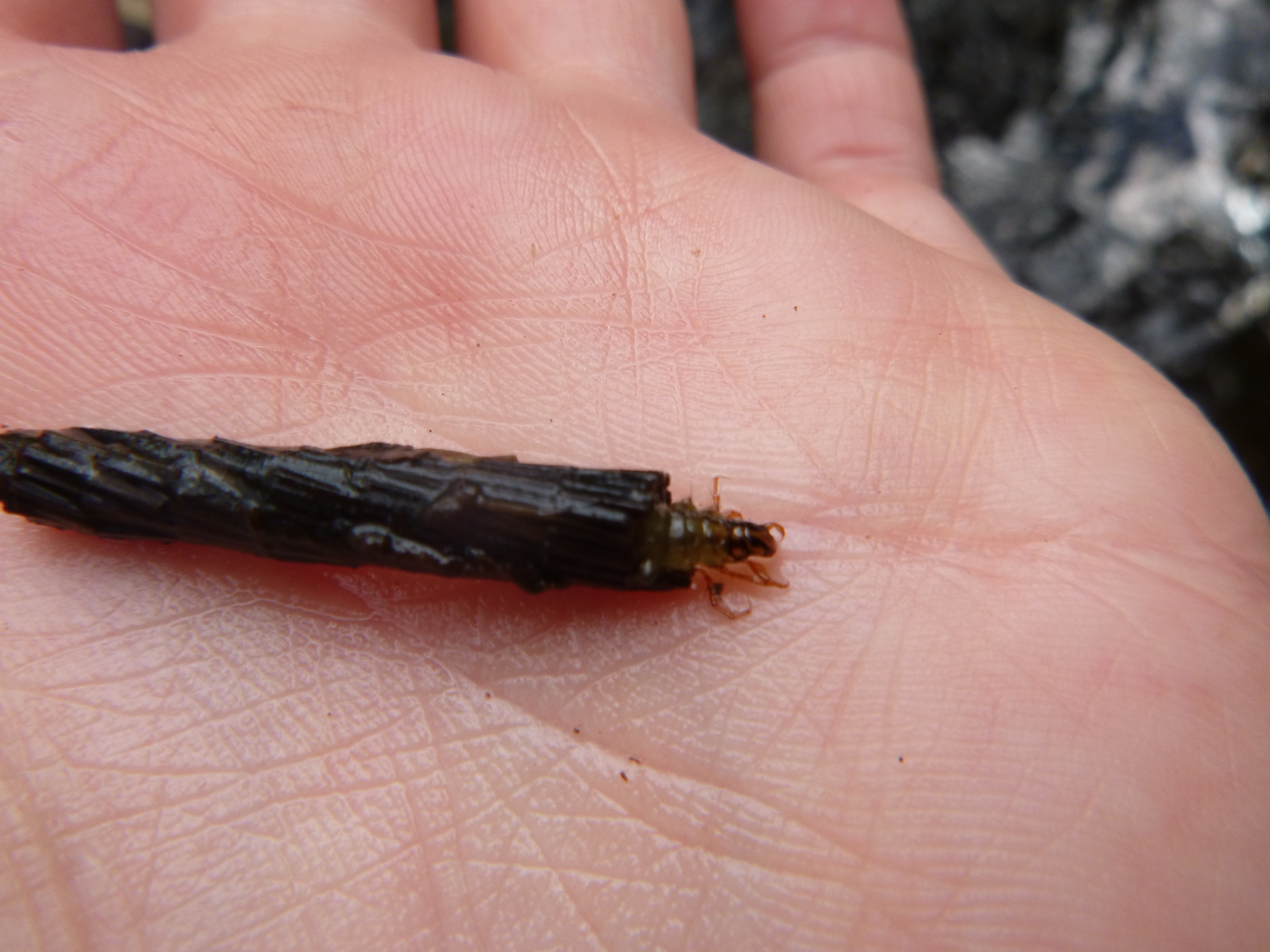
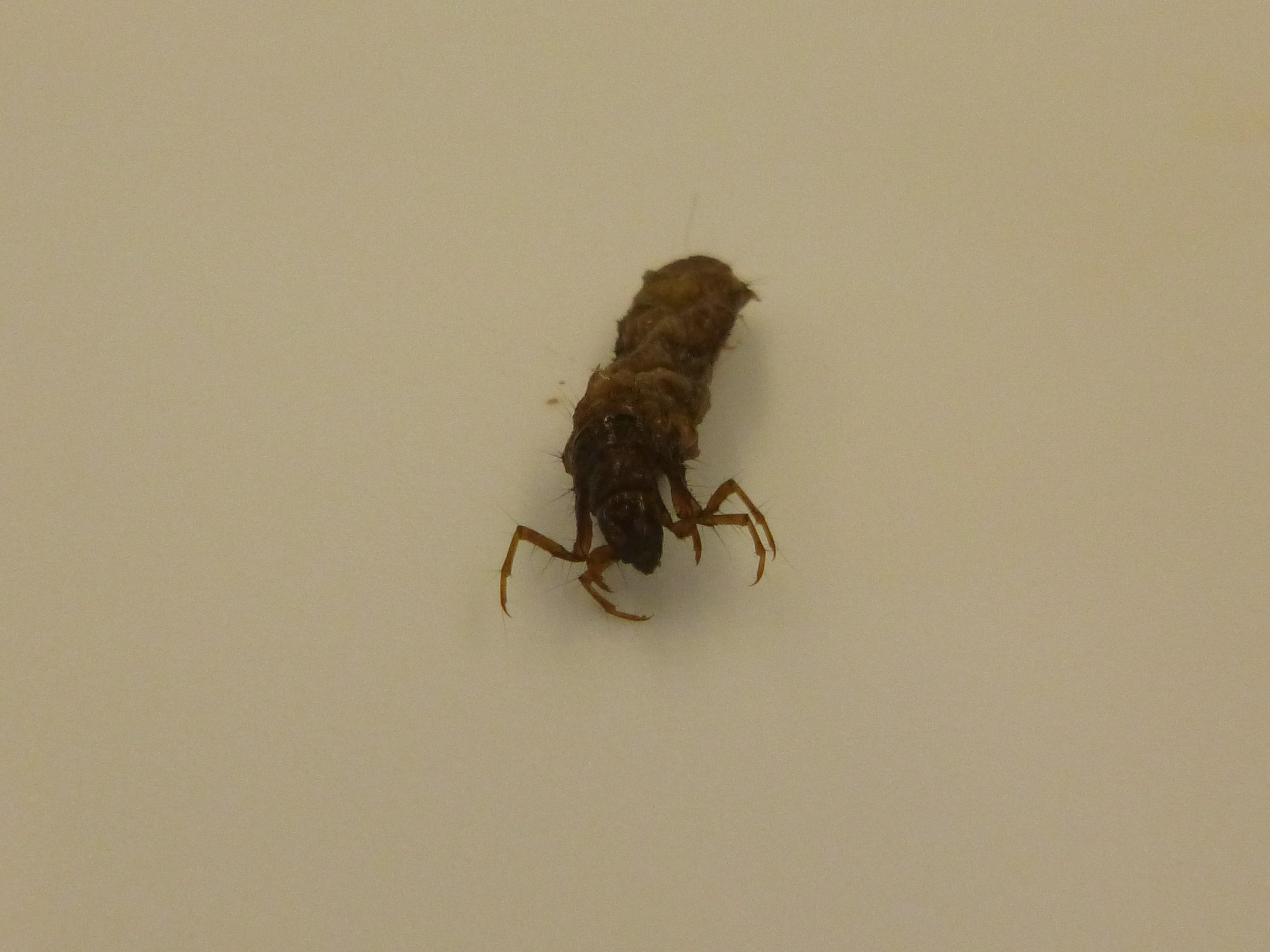
Caddisfly larvae can shred leaves and other fallen organic matter to make their protective cases and filter the water and/or scrape surfaces for biofilms. The caddisfly on the left is in its case, while the one on the right is pictured without its case.
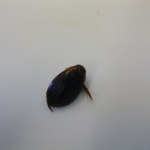
Dytiscid
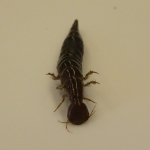
Water tiger
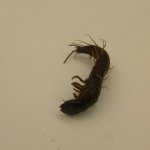
Megalopeterans
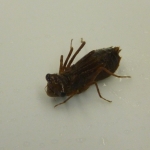
Libellulidae
Dytiscid beetle larvae (a.k.a. water tigers) have mouthparts that can pierce tadpole skin and suck out bodily fluids. These piercing mouthparts are almost as wide as the head and are kept neatly folded until the time of attack. A successful capture for a beetle larvae means death for the tadpole.
Water tigers make an amazing transformation between their larval and adult stages, but are on the hunt for tadpoles at both stages.
Megalopeterans have strong mandibles to catch and eat their prey. Look out tadpoles!
Libellulidae dragonfly larvae are a bit smaller, but are another predator in vernal pools.
The deeper I dug, the more cool things I found out about how predatory insects influence tadpoles. Wood frog tadpoles are well known to adapt their growth and behavior to cope with the predator pressures in a pool. Because many insect predators in vernal pools cue on prey movements, tadpoles move less in their presence to prevent attack. In pools with relatively high densities of insect predators tadpoles grow larger, thicker tail fins to better “sprint” away from a predator in case of attack. Tadpoles are so adapted to living with the dangers of insect predators that they can even “smell” them. Experiments have shown that even when predators cannot come in contact with tadpoles, the presence of a caged predator or even just water with predator chemical cues results in tadpoles that forage less and grow larger tails. Other experiments have demonstrated that exposure to predator cues can slow tadpole growth and result in smaller froglets emerging from pools.
Predatory insects are ubiquitous: we have found them even in our most urban sites. Because these insects are everywhere and their natural predation pressure on tadpoles can be strong disentangling the “true” response of tadpoles to urbanization (as opposed to predation) may not be so easy. Additionally, there are a multitude of urban factors – such as lawn fertilizers, road salts, reduced forest canopy cover, altered hydrology – which likely influence tadpole health, growth, and survival. This confluence of natural and anthropogenic factors makes my task more challenging, but armed with a broader ecosystem perspective that includes those underwater creepy-crawlies (and some multivariate statistics!) I hope to better understand tadpole responses to urbanization.
Bibliography
Brodie ED, Jr, and Formanowicz DR, Jr. (1983) Prey size preference of predators: differential vulnerability of larval anurans. Herpetologica 1983:67-75.
Newman RA (1992) Adaptive plasticity in amphibian metamorphosis. Bioscience 1992:671-678.
Relyea RA (2004) Fine-tuned phenotypes: tadpole plasticity under 16 combinations of predators and competitors. Ecology 85.1:172-179.
Relyea RA (2003) How prey respond to combined predators: a review and an empirical test. Ecology 84.7:1827-1839.
Skelly DK, Werner EE (1990) Behavioral and life-historical responses of larval American toads to an Odonate predator. Ecology 1990:2313-2322.
Skelly DK (1994) Activity level and the susceptibility of anuran larvae to predation. Animal Behavior. 47:465-468.
Van Buskirk J, Anderwald P, Lupold S, Reinhardt L, and Schule H (2003) The lure effect, tadpole tail shape, and the target of dragonfly strikes. Journal of Herpetology 37.2:420-424.
